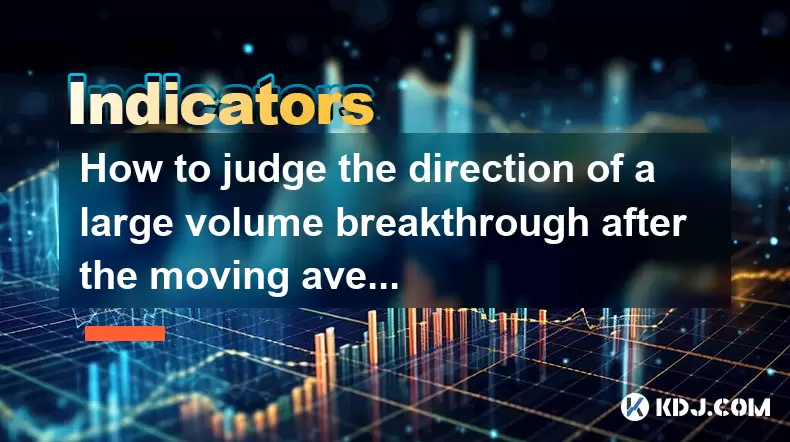-
 Bitcoin
Bitcoin $108,338.0981
-0.13% -
 Ethereum
Ethereum $2,566.4077
1.16% -
 Tether USDt
Tether USDt $1.0001
-0.01% -
 XRP
XRP $2.2841
-2.59% -
 BNB
BNB $658.5241
-0.17% -
 Solana
Solana $150.3819
-1.08% -
 USDC
USDC $0.9999
-0.01% -
 TRON
TRON $0.2864
-0.24% -
 Dogecoin
Dogecoin $0.1694
0.24% -
 Cardano
Cardano $0.5813
-0.72% -
 Hyperliquid
Hyperliquid $37.8292
-4.60% -
 Bitcoin Cash
Bitcoin Cash $503.3593
1.69% -
 Sui
Sui $2.8784
-0.69% -
 Chainlink
Chainlink $13.4784
-0.43% -
 UNUS SED LEO
UNUS SED LEO $9.0793
-0.27% -
 Stellar
Stellar $0.2537
-0.41% -
 Avalanche
Avalanche $18.0047
-0.23% -
 Shiba Inu
Shiba Inu $0.0...01181
1.56% -
 Hedera
Hedera $0.1608
0.49% -
 Toncoin
Toncoin $2.7568
-0.93% -
 Litecoin
Litecoin $86.4121
-0.20% -
 Monero
Monero $313.7273
-0.86% -
 Polkadot
Polkadot $3.3715
-0.66% -
 Dai
Dai $1.0001
0.01% -
 Ethena USDe
Ethena USDe $1.0004
0.03% -
 Bitget Token
Bitget Token $4.2902
-0.54% -
 Uniswap
Uniswap $7.5361
2.73% -
 Aave
Aave $285.6090
-0.55% -
 Pepe
Pepe $0.0...09958
0.28% -
 Pi
Pi $0.4560
-0.65%
How to judge the direction of a large volume breakthrough after the moving averages are glued together?
2025/06/29 21:57

Understanding Moving Averages and Their Convergence
In technical analysis, moving averages (MAs) are among the most commonly used indicators to assess trend direction and potential reversals. When multiple moving averages—such as the 20-period, 50-period, and 200-period—glue together, it signifies a period of consolidation or indecision in the market. This phenomenon typically occurs during sideways price action or before significant volatility. In the cryptocurrency market, where price swings can be extreme, recognizing this pattern is crucial for anticipating potential breakouts.
The convergence of moving averages suggests that short-term, medium-term, and long-term trends are aligning closely. During such periods, traders often look for volume spikes to confirm the direction of the upcoming breakout. High trading volume accompanying a breakout from a consolidation zone may indicate strong institutional or retail participation, increasing the likelihood of a sustained move.
Identifying Volume Breakouts in Cryptocurrency Charts
Volume plays a pivotal role in validating price movements. In crypto markets, which operate 24/7 and often experience sudden surges in trading activity, abnormal volume increases can serve as early signals of a breakout. When moving averages converge, traders should closely monitor candlesticks for signs of a decisive move supported by significant volume expansion.
Key characteristics to observe include:
- A candlestick closing outside the consolidation range formed by the glued MAs.
- A spike in volume compared to the average volume over the previous 10–20 candles.
- Price movement continuing beyond the breakout candle with consistent momentum.
For instance, if Bitcoin’s 20, 50, and 200 exponential moving averages (EMAs) are tightly clustered and a bullish engulfing candle appears with volume doubling its recent average, this could signal a strong upward breakout.
Evaluating Candlestick Patterns Post-Convergence
After identifying a volume surge, the next step involves analyzing the candlestick structure to determine the strength and sustainability of the breakout. In crypto markets, where sentiment shifts rapidly, certain candlestick patterns offer valuable insight into buyer and seller dynamics.
Watch for:
- Bullish engulfing patterns following a downtrend or consolidation phase.
- Hammer or inverted hammer formations indicating rejection of lower prices.
- Large-bodied candles showing clear dominance by either buyers or sellers.
Conversely, bearish reversal patterns like shooting stars or dark cloud covers after an uptrend might suggest a false breakout. Traders must avoid entering positions based solely on volume without confirming the candlestick context.
Utilizing Support and Resistance Levels Around MA Glue Zones
When moving averages converge, they often form a tight cluster that acts as dynamic support or resistance. The area around these glued MAs becomes a critical decision point for price action. A valid breakout should not only come with increased volume but also respect key horizontal support/resistance levels.
Steps to incorporate support/resistance:
- Identify major swing highs/lows or prior consolidation zones near the glued MAs.
- Observe how price reacts when approaching these levels—does it bounce or break through decisively?
- Confirm that the breakout candle closes beyond both the glued MAs and the identified support/resistance level.
In volatile crypto markets, fakeouts are common. Therefore, waiting for the price to retest the broken level as new support or resistance adds confidence in the validity of the breakout.
Applying Multiple Timeframe Analysis for Confirmation
To enhance accuracy, traders should analyze the same setup across multiple timeframes. For example, a daily chart showing glued MAs and a volume-based breakout can be cross-checked with the 4-hour or 1-hour charts for entry timing.
This approach helps in:
- Filtering out false signals that appear on lower timeframes.
- Spotting divergences between different timeframe volumes.
- Identifying confluence areas where breakouts on smaller timeframes align with larger ones.
A trader observing a daily breakout in Ethereum with high volume might zoom into the 4-hour chart and find another confluence of MAs and a bullish candlestick pattern forming. Such multi-timeframe alignment increases the probability of a successful trade.
Frequently Asked Questions
Q: What timeframes work best for analyzing glued moving averages and volume breakouts?
A: While any timeframe can show glued MAs, the daily and 4-hour charts are preferred for spotting reliable volume breakouts in crypto due to their balance between noise reduction and responsiveness to market shifts.
Q: Can volume alone confirm a breakout direction?
A: No, volume should always be combined with price action and candlestick confirmation. High volume without a strong directional candle or a clean break of key levels can lead to misleading signals.
Q: How many moving averages should be glued together to consider it a valid consolidation zone?
A: Typically, traders use at least three EMAs—such as the 20, 50, and 200—to identify a meaningful convergence. However, some strategies involve using more or fewer depending on the asset and strategy.
Q: Should I enter a trade immediately after a volume breakout?
A: It’s generally safer to wait for a retest or confirmation candle after the breakout. Entering too early exposes traders to false breakouts, especially in highly volatile crypto markets.
免責聲明:info@kdj.com
所提供的資訊並非交易建議。 kDJ.com對任何基於本文提供的資訊進行的投資不承擔任何責任。加密貨幣波動性較大,建議您充分研究後謹慎投資!
如果您認為本網站使用的內容侵犯了您的版權,請立即聯絡我們(info@kdj.com),我們將及時刪除。
- Coinbase(Coin)IPO閃回:集會過度擴展還是剛開始?
- 2025-07-08 22:50:12
- Toonie麻煩:像專家一樣發現假貨
- 2025-07-08 22:50:12
- Coinbase,Crypto Stocks和Ozak AI:乘坐Web3浪潮
- 2025-07-08 23:10:14
- BTC,打snter代幣和加密貨幣場景:有什麼交易?
- 2025-07-08 23:15:12
- 模因硬幣,早期投資,拋物線增長:捕捉波浪
- 2025-07-08 22:30:12
- 加密,機構,BTC&ETH:新時代黎明
- 2025-07-08 22:30:12
相關知識

How to trade Dogecoin based on funding rates and open interest
2025-07-07 02:49:34
<h3>Understanding Funding Rates in Dogecoin Trading</h3><p>Funding rates are periodic payments made to either long or short traders ...

What is the 'God Mode' indicator for Dogecoin
2025-07-07 16:42:48
<h3>Understanding the 'God Mode' Indicator</h3><p>The 'God Mode' indicator is a term that has emerged within cryptocurrency trading ...

Using Gann Fans on the Dogecoin price chart
2025-07-07 21:43:10
<h3>Understanding Gann Fans and Their Relevance in Cryptocurrency Trading</h3><p>Gann Fans are a technical analysis tool developed b...

How to spot manipulation on the Dogecoin chart
2025-07-06 12:35:49
<h3>Understanding the Basics of Chart Manipulation</h3><p>Chart manipulation in the cryptocurrency space, particularly with Dogecoin...

Dogecoin market structure break explained
2025-07-07 02:51:32
<h3>Understanding the Dogecoin Market Structure</h3><p>Dogecoin, initially created as a meme-based cryptocurrency, has evolved into ...

How to backtest a Dogecoin moving average strategy
2025-07-08 04:50:05
<h3>What is a Moving Average Strategy in Cryptocurrency Trading?</h3><p>A moving average strategy is one of the most commonly used t...

How to trade Dogecoin based on funding rates and open interest
2025-07-07 02:49:34
<h3>Understanding Funding Rates in Dogecoin Trading</h3><p>Funding rates are periodic payments made to either long or short traders ...

What is the 'God Mode' indicator for Dogecoin
2025-07-07 16:42:48
<h3>Understanding the 'God Mode' Indicator</h3><p>The 'God Mode' indicator is a term that has emerged within cryptocurrency trading ...

Using Gann Fans on the Dogecoin price chart
2025-07-07 21:43:10
<h3>Understanding Gann Fans and Their Relevance in Cryptocurrency Trading</h3><p>Gann Fans are a technical analysis tool developed b...

How to spot manipulation on the Dogecoin chart
2025-07-06 12:35:49
<h3>Understanding the Basics of Chart Manipulation</h3><p>Chart manipulation in the cryptocurrency space, particularly with Dogecoin...

Dogecoin market structure break explained
2025-07-07 02:51:32
<h3>Understanding the Dogecoin Market Structure</h3><p>Dogecoin, initially created as a meme-based cryptocurrency, has evolved into ...

How to backtest a Dogecoin moving average strategy
2025-07-08 04:50:05
<h3>What is a Moving Average Strategy in Cryptocurrency Trading?</h3><p>A moving average strategy is one of the most commonly used t...
看所有文章

























































































